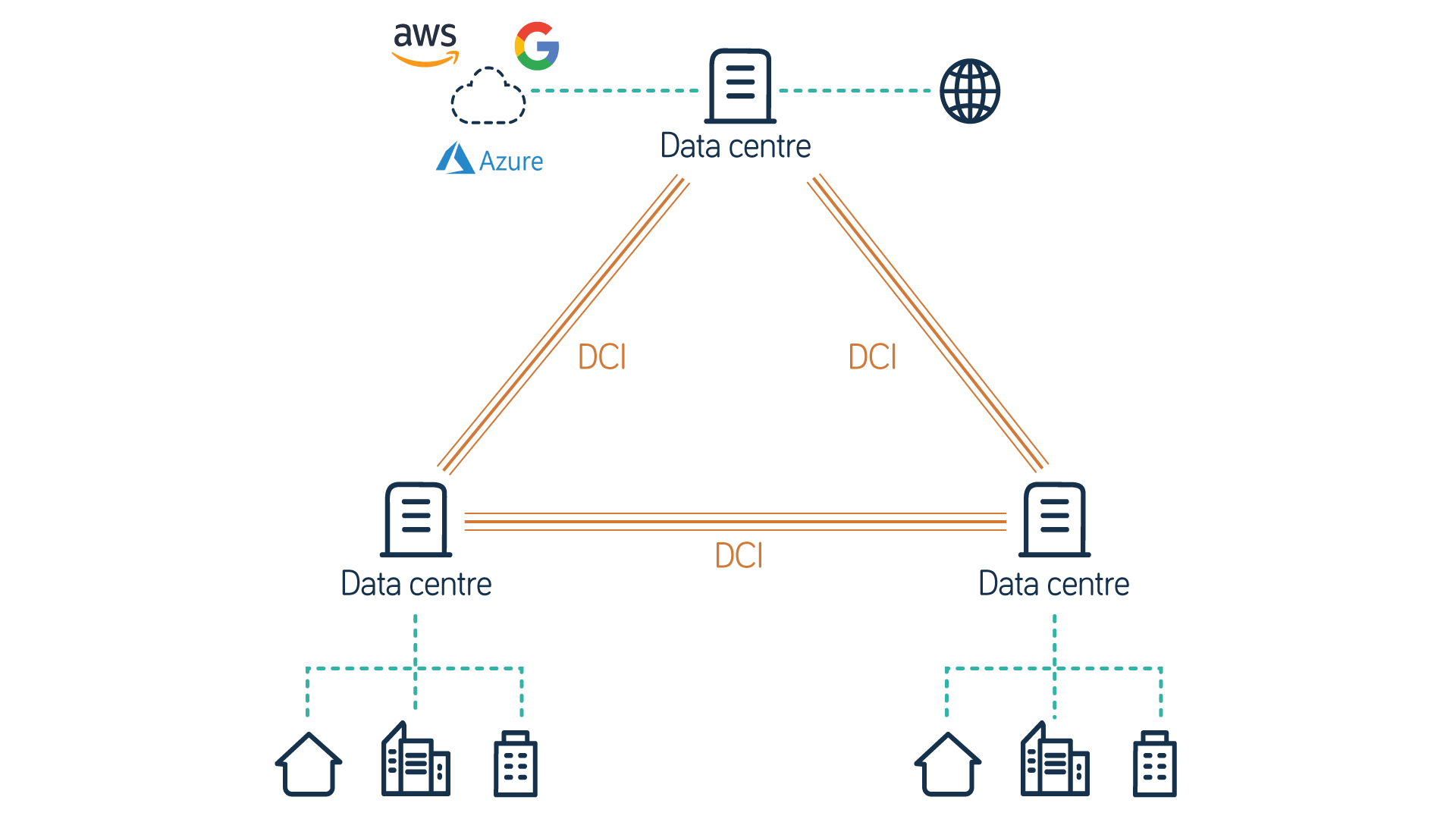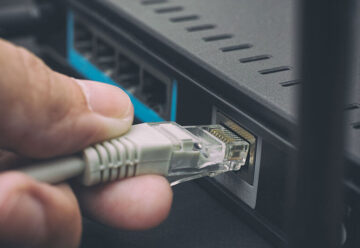What is data centre interconnect (DCI)?
Data centre interconnect is a high capacity connection between two or more data centres – a vital link in network infrastructure to meet the growing demand for data.
- Neos Networks
- Optical ,

Our UK-wide data centre network
What is data centre interconnect?
Data centre interconnect (DCI) is the technology used to connect two or more data centres to share data and resources. It not only delivers high-speed data transfer but also performs technical functions like data replication, load balancing and traffic management to optimise the network.
DCI may be over a short distance, across a campus or town, or longer range, crossing regions, countries or continents. Whether local or long distance, DCI allows multiple data centres to operate as a unified whole, simplifying network management and enhancing efficiency.
With the rise of cloud services, AI and edge computing, data is exploding. DCI enables businesses to scale up their network quickly to meet this demand and bring data storage closer to data sources.
Data centre interconnect (DCI)

How does DCI work?
Data centre interconnect works by transmitting data between data centres via high capacity, low latency fibre optic connections:
- High-speed Ethernet standards like Metro Ethernet are often used to transmit data over shorter distances. Ethernet delivers speeds up to 10Gbps or higher.
- Optical connectivity uses Wavelength Division Multiplexing (WDM) to divide optical wavelengths into multiple channels for higher bandwidth transmission over longer distances. Optical Wavelengths support speeds up to 400Gbps, with 800Gbps under development.
Get ultrafast, low latency Optical Wavelengths
Supercharge your network up to 400Gbps
To direct data traffic, DCIs typically use Multiprotocol Label Switching (MPLS). MPLS routes data between network nodes using short paths instead of long network addresses, speeding up traffic.
For example, Virtual Private LAN Service (VPLS) uses MPLS to provide seamless data transfer between data centres in a single Ethernet network. VPLS operates at layer 2 of the OSI model.
The seven layers of the OSI Model
| # | Layer | Function |
| 7 | Application Layer | Enables humans or software to interact with the network through applications like file sharing, email clients and databases |
| 6 | Presentation Layer | Formats, encrypts and decrypts data for the application layer |
| 5 | Session Layer | Starts, maintains and ends connections between applications |
| 4 | Transport Layer | Uses various transport protocols to transfer data across the network |
| 3 | Network Layer | Enables communication between multiple networks and determines the data’s path, for example, applying IP addresses |
| 2 | Data link Layer | Manages connections between physically connected nodes on a network |
| 1 | Physical Layer | Transmits raw data bits over physical media like cables or wireless connections |
At the network layer (layer 3), IP VPNs can connect data centres over IP-based networks, enabling secure interconnections over longer distances. Similarly, DCI may use software-defined wide area networking (SD-WAN) to provide flexible, efficient connectivity and optimise traffic flows.
To ensure data consistency and availability, DCI replicates and synchronises data in near real time. If a data centre fails, the connection automatically switches to a backup, minimising downtime and data loss.
What are the benefits of DCI?
DCI can help businesses expand their networks quickly and efficiently to meet today’s exploding demand for data. Here are some key advantages of DCI.
Enhanced performance
DCI provides high capacity, low latency data transfer between data centres, balancing the workload between data centres to optimise network efficiency. You can also apply Quality of Service to prioritise network traffic and ensure critical applications have the necessary bandwidth.
Easy scalability
DCI enables you to quickly scale up your network by adding new data centres or expanding existing ones without significant capital investment. You can bring data storage closer to your end users for optimum customer experience.
Cost efficiency
DCI enhances operational efficiency by facilitating data sharing and optimising resources across multiple locations. This reduces the need for redundant infrastructure, lowering overall maintenance and operational costs.
Strong security
DCI solutions typically use secure, dedicated fibre optic connections. Advanced encryption, firewalls and access controls ensure data is protected in transit and at rest.
Improved compliance
DCI facilitates data replication across multiple data centres for disaster recovery, reducing the risk of data loss. This can help protect sensitive data and ensure compliance with data protection laws.
To sum up, DCI provides high capacity data centre connectivity to support growth, enhance performance and ensure business continuity while offering cost and operational efficiencies.
Data centre interconnect use cases
DCI is suitable for various applications that depend on high capacity, low latency data exchange. Here are some common uses of DCI technology.
Data centre interconnect – typical applications
| Industry/application | Example use cases |
| Telecoms providers | Connects data centres managing voice, data and video traffic in backbone and backhaul networks |
| AI and machine learning | Enables use of distributed computing power to train AI and ML models and serve end users |
| Internet of Things (IoT) | Integrates data from IoT devices into central data centres for real-time processing |
| Big Data analytics | Enables large datasets from multiple sources to be aggregated for analysis |
| Content delivery networks | Helps distribute high-volume content like videos and images across multiple data centres to improve load times |
| Financial services | Delivers ultra low latency near-real-time data exchange for high-frequency trading |
| Disaster recovery | Replicates data to remote data centres for backup and business continuity |
In short, DCI technology can be used wherever you need seamless, high-speed data transfer between dispersed locations.
DCI solutions for your business
Since DCI involves various technologies at different network layers, choosing the right solution for your business can be challenging.
At Neos Networks, we specialise in bespoke data centre interconnects for businesses across the UK. Get resilient, scalable DCI solutions with Ethernet and Optical Wavelengths up to 400Gbps in over 90 data centres across our B2B-only nationwide network.
Get ultrafast, low latency Optical Wavelengths
Supercharge your network up to 400Gbps
If you’d like to discuss your DCI options, get in touch. We’ll be happy to make DCI work for your business.




